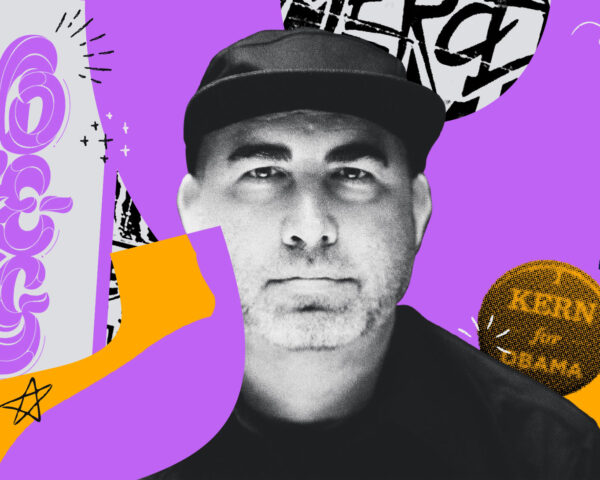Naming a brand or product feels like the big leagues of branding. Much of the more words-focused aspects of building a brand, like messaging and voice work, play a more behind-the-scenes role. But your brand name? It’s center stage – introducing who you are, what you do, and even what you stand for in just a word or two. No pressure.
Brand naming is a big part of what we do for businesses big and small at my creative studio, Relatable Content, and something that happens regularly at Atlassian, with Karan Baboota, Senior Manager of Brand Strategy. He helped establish the company’s naming principles, worked with his team to name Atlassian’s new AI product, and joined me for a call to discuss it all.
I’ll admit that I went into our chat assuming we would have totally different brand naming processes, but our ethos are similar. The reason a big company and a small (but mighty!) creative agency have complementary approaches is this little secret: brand naming is as much a science as it is an art. Like baking, naming has a science to it – a set of recipes and essential ingredients. But the winning treat has your unique flavor and signature sprinkles mixed in – that’s the art.
Naming something, whether your brand, business, product, or pet, can feel daunting, but with the right steps (keep scrolling for those), your own set of “rules,” and a little space to break them, you’ll be unveiling your (brand) new identity in no time. We’ll focus these tips on brand naming, but you can follow them to name just about anything.
Best practices for brand naming
Here’s another secret: naming doesn’t always happen “first.” With products especially – from apps to skin serums – development often happens in tandem with naming and branding. Whether you’re pre-launch, growing, or going through a complete rebrand, you’re in a good spot to kick off your naming.
Start with space to explore
Quiet the impulse to dive into brainstorming, and instead begin your brand naming with discovery. It’ll give you additional clarity on what exactly you’re building and who you are as a business or brand to ensure your moniker has real meaning and supports your strategy. It will also help make sure you’re really ready to name.
“When people come to me with a naming request, sometimes I’m triaging to figure out, ‘are you asking a naming question, or is there an underlying strategic question we need to answer?’” Karan shares. To get to those answers, our existential exploration spans brand and business.
For individual or small-business clients, we start with a written Q+A and follow up with an interview. For bigger teams like Karan’s, brand naming often begins with a pre-project questionnaire. “Strategic gaps can be revealed during the naming process,” Karan says. “So it’s important to ask these questions in the beginning of the work and to gut check throughout if you get stuck.” Similarly, we say that Relatable Content’s naming packages come with bonus biz dev, as we guide founders through thinking that helps solve for underlying issues and plan for long-term success.
With their new AI product, Karan and the Atlassian team had to consider what it would mean in the larger AI landscape and within their existing brand. Asking the right questions at the jump helps generate ideas and, especially with bigger teams, incorporates diverse voices and concerns. Luxuriate in the time needed for discovery: look back at your history, answer for your purpose, and build toward your future. All in the name of naming.
Assemble a dream team to brainstorm your brand name
Everyone who’s worked on the brand or product you’re naming has a stake in the outcome – channel their passion into your process! Find opportunities for cross-functional teams to come together: kickoff, a mid-way check-in, the big reveal.
To avoid overcrowding your brainstorms, your dream team might include one person representing each relevant team. Call in a product person who knows the features best, invite a marketer who’s audience-obsessed, and bring on brand strategists with varying backgrounds. I like to mix up my brand naming teams with writers who have worked with brands and journalists – bonus points if their beats covered the industry our client is in.
No matter who’s on the calendar invite, keep Karan’s advice in mind: “Good brand building is not one person in a room coming up with an idea – it’s very collaborative.” So even if you don’t identify as A Creative, we’ll save you a seat at our naming tables.
Embrace your brand’s uniqueness (but make it make sense)
After your discovery illuminates that valuable brand DNA, make sure it’s embedded into your name. That means brainstorming that pushes ideas past their first round to get more specific and special to you.
It’s why I encourage “rabbit holes” to kick off your brainstorms. Often, people come to me with ideas for their brand name, but I don’t see them on the list. Instead, I see rabbit holes they should follow to turn these first-draft ideas into many more, and uncover gems only they can. Let’s say a client wants to name their company after a nearby mountain range… just like dozens of other neighboring businesses. I’d push them to keep climbing: What do those mountains represent? What other mountains or areas are special to you? What is it about nature that inspires you? When Karan and team are naming a product, they dig into its functional and emotional benefits, asking “what do we want the audience to experience or feel?”
Is it better to be descriptive or evocative?
Play it safe or go nuts? It’s the ultimate question in decision-making, branding or otherwise. While the Atlassian Brand Strategy team generally advises sticking to real, descriptive names found in the dictionary, they explore all options.
To do this best, structure your top ideas on a scale from Vanilla (safer) to Rocky Road (less safe, more nuts) with pros and cons listed below each option.
Choosing a more evocative name isn’t always a “no” – it just means you’ll need to consider the branding and marketing efforts it may take for it to work within your brand and for the people interacting with it.
For Atlassian, AI itself was an obvious rabbit hole. Traveling its twists and turns, they discovered industry naming trends they wanted to avoid and uncovered a new point of naming inspiration. Instead of focusing on the technology that powers it, Karan and team noodled further on the benefits of the product: it enables teams to find information, learn from it in real-time, and take action alongside AI.
Remember that your name can’t solve *everything*
“Don’t try to make your name do everything,” Karan wisely warns. “There are so many other levers within your identity to scratch the branding itch you’re looking for.”
If you’re starting your branding journey with a name, supplement its meaning with messaging. If you’re building out your brand with a product or event, consider existing elements like purpose and positioning in your naming of it. Keep in mind that naming is a pivotal chapter in your brand identity, but it’s not the whole book.
How do you get a bunch of different people to agree on a name?
Believe it or not, with teams big and small, you may encounter a large range of opinions about names. Even when you get down to the final few. Here’s Karan’s advice on avoiding a brand naming blow-up:
- Set expectations of what you want your name to achieve early on, and what principles will guide you to achieve them.
- Invite people into the conversation early to mitigate clashes that could crop up later. Note concerns, wants, and needs, and show that you’ve considered them in the final selections.
- Paint a picture of how the desired name(s) fit in and support the current and future ecosystem of the brand.
- Embrace multiple “finalists” so you don’t fall in love with one name that gets axed for a trademark risk. This last tip is to protect your tender branding heart – and encourage you to hold off on that merch purchase.
Create a checklist for your brand naming process
From budget to business specifics, team size to timeline, your ultimate brand naming process will be as unique to you as the name itself. Instead of hard and fast rules, embrace these basic truths as a checklist in your naming strategy, and add your own as needed:
Your name should:
- Make sense: Unique? Absolutely. A clever inside joke? Sure! Hard to pronounce or more confusing than intriguing? Dial it back. “If something is a cup, don’t call it something that isn’t… ‘cup,'” says Karan.
- Build for a bright future: Trends are fun, but you want your business and its name to outlast this brat summer (and even next year’s pumpkin spice season).
- Support strategy and purpose: Aim for a name that fits today and with all the game-changing plans you have for the next five, ten, 50 years.
- Inspire yourself and your team: You’re proud of the business or product you’re building, so you should be proud of what it’s called.
- Entice your audience(s): While internal excitement is important, make sure your name connects (and again, makes sense) to your community, too.
- Stay on brand: Simple, but deceptively tricky to pull off – your new-name candidates should feel like an extension of your brand’s core values. If it doesn’t, keep brainstorming. If it does, it’s a contender.
“Naming principles should feel natural and give your team something to start from,” Karan advises. “When you have the right structure in place, people appreciate having something to follow, sparks for creativity, and clarity to do better work.”
After months of cross-functional collaboration and rounds of brainstorming that resulted in lots of ideas (Karan estimates up to 200!), the Atlassian team had a short list of candidates to name their new AI product. They checked the list alongside their naming principles and goals, looking for the best fit for the product, the brand, and the industry it would need to stand out in.
The name they landed on was Rovo. A little more Rocky Road than Vanilla, the name is creative while still – say it with me – making sense. Plus, it has its own stories to tell. Among them: It was inspired by the fetching name for “Rover,” a machine that explores interstellar terrain, gathering information and beaming it to a team on Earth. Kind of like Rovo and what it does for the teams who tap it.
Steps to get started on your brand naming brainstorm
Maybe you’ve made it here and are a little stuck. Stuck on how Karan and team came up with 200 ideas. Or stuck on your first few ideas. Whether you’re flying solo with your own startup or gathering a team together, here’s how to break through creative blocks and brainstorm for your brand name like a branding expert:
- Use the checklist above and add your own “rules” or goals to it
- From there, create a list of rabbit holes, or naming thought-starters
- Set a timer for no more than 90 minutes
- Follow your rabbit holes, and come up with 100-plus names. Some will seem bad, and that is GOOD! Even “bad” names reveal patterns and new ideas, or will look “actually, not bad!” to fresh eyes.
- Now, take a day, and notice brands and their names in the wild. What do you like or not like about them? How do they make you feel?
- Return to your list to find seven or so favorite names or patterns that popped up. If you’re brainstorming with others, run this part as a show and tell.
- Do a second brainstorm using these seven picks as new rabbit holes.
- Show and tell again with your designated dream team. If you’re brainstorming solo, get opinions from a few people you trust and ideally are representative of your audience.
- Choose your favorites, outlining pros and cons for the top picks, and identify competition or trademark risks with the help of a lawyer.
“Naming is a journey that takes time, practice, and tenacity,” Karan says. “Be patient with yourself, stick to your principles, and bring the right people along for the ride. There’s no greater feeling than introducing the world to your brand by name.”
We hope we’ve given your naming art a little structure, and your branding science encouragement to explore. With the right balance of it all, you’ll find a name that does your team proud and strengthens your brand.












































